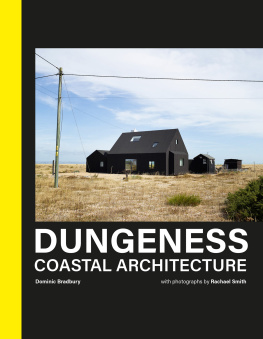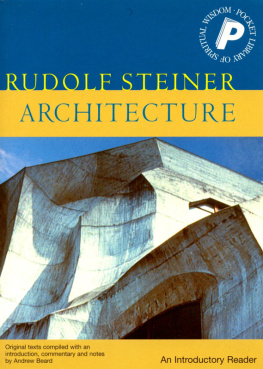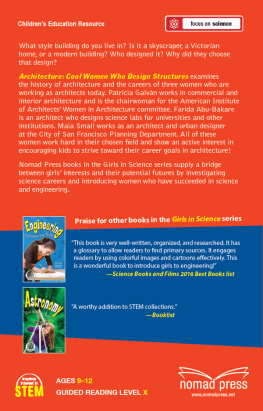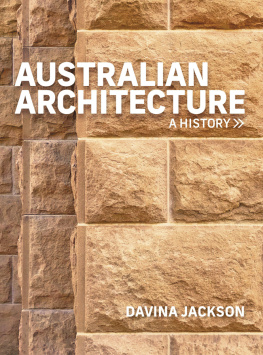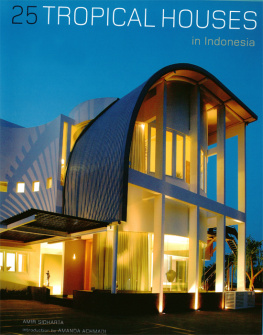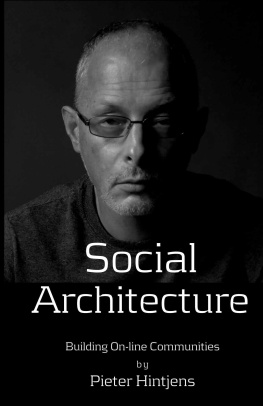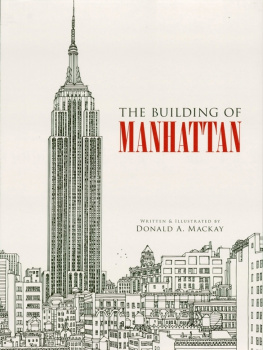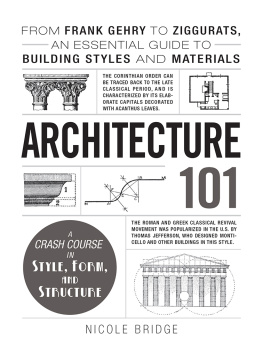

You brought together some wonderful people and that alone as friends should have been enough to make my visit very special. But the caliber of architecture brought together made this one of the most memorable events that I have been a part of through a career of some fifty years. It was marvelous. Thank you.
Glenn Murcutt
I have attended numerous conferences around the world but I can say that this was the best; I was particularly impressed and inspired by the sense of optimism.
Juhani Pallasmaa
What can I say? What can anyone say? An unrepeatable, memorable event, and a wild party.
Kenneth Frampton
Foreword
Brian MacKay-Lyons
Dont let the school stand in the way of your education.
Essy Baniassad
In 1994 I was an angry young architect and professor at Dalhousie University in Halifax, Nova Scotia, frustrated with the state of architectural education. I took a small group of first-year students out of school and to my farm on the Nova Scotia coast and told them: Close your eyes and imagine flying over the ghost of a forgotten village at the end of the earth. If you breathe deeply enough you may even smell the laundry that used to hang on the clotheslines. Norwegian architecture critic Ingerid Helsing Almaas has pointed out that anger is not enough to explain the work that followed, at Ghost Architecture Laboratory and at MacKay-Lyons Sweetapple Architects. Ghost has evolved into an international design-build internship, reinforcing students sound intuition that architecture has always been about landscape, making, and community. Ghost is also a utopian endeavor, driven by empathy and love.
After decades of cultivating our little valley at the end of the earth, the site (according to Glenn Murcutt) has become a kind of paradise. It is an optimistic act of will. It is the place that, for me, expresses the unity of life, integrating practice and teaching, family and community. For a group of friends and respected colleagues, it has been neutral turf, like Constantinos Doxiadiss boat that the Team 10 architects sailed together in the Mediterranean so many decades ago.
From the start, Ghost has not been alone. Friends such as Samuel Mockbee of the Rural Studio, Steve Badanes of Jersey Devil, and the Glenn Murcutt Master Class have been fellow travelers on this alternative dirt road. As a young architect in 1982, at Team 10 architect Giancarlo De Carlos ILAUD (International Laboratory of Architecture and Urban Design), I witnessed a similar, collegial, alternative think tank frequented by Alison and Peter Smithson, Aldo van Eyck, Sverre Fehn, Richard Rogers, Charles Moore, Italo Calvino, and others. And Ghost has inspired other programs in its turn.
Ghost has been sustained by a loose consortium of architectural schools and practices, whose students, professors, and practicing architects and engineers have participated. It has also been a meeting place for a group of guest architects and critics, who share a commitment to the timeless architectural values of place, craft, and communitya fantastic virtual faculty.
Ghost 13 was a long-planned reunion of past guests; a group of exceptionally talented architects and historians/critics. Place, craft, and community served as a thematic structure for the conference; the work of all of these architects is an artful synthesis of these essential aspects of our discipline. In her talk, Brigitte Shim linked the conference venues with these common values, describing the Ghost site as a cultivated place, St. Johns carpenter Gothic church in Lunenburg as the embodiment of craft, and the collegial gathering in the barn as the expression of community. This was trying to see the world whole.
The three keynote speakers are respected elders who continue to influence generations of architects. Kenneth Framptons critical regionalist thesis has enabled our resistance in the face of the numbing cultural influence of globalization. Glenn Murcutts work, in the words of Juhani Pallasmaa, projects a new concept of beauty arising from a deep understanding of place, climate, and nature. Juhanis eloquent insistence, through his seminal writings, on the phenomenological architecture of human experience has inspired us all. At Ghost 13 the steady hand and presence of the elders contributed a measured and thoughtful rhythm to the proceedings.
Many of the participants are former outsiders, what Peter Buchanan calls the resistance, working outside the centers of architectural fashion. At the end of the day, all of the speakers were invited because of their high level of formal, professional design skill, as evidenced by a mature and consistent body of built work, as well as their past connection to Ghost. They speak from the authority of practice. It is important to add that this is not an exclusive group. Other like-minded architects are part of this community of respected colleagues.
Most of us are both practitioners and academics, at a time when this distinguished dual-career tradition in architecture has almost become extinct. Long gone are the days when architects, such as Walter Gropius, Louis Kahn, and Rafael Moneo, led schools. In the academy, the research culture of the sciences and the humanities is being applied to architecturean alarming trend for an applied discipline. (In an applied nature, architecture resembles medicine or music.) The attendant promotion criteria have led a generation of young professors away from practice, with the result that design studio is now largely taught by nondesigners. The academy is becoming more esoteric. Meanwhile, in corporate practice, the educational responsibility of apprenticeship within the master builder tradition is being lost. Young architects are progressively regarded as mobile human capital, an attitude exacerbated by the use of digital production tools. Practice is becoming more anti-intellectual.
Given these circumstances, it is not surprising that architectural education was an unstated theme of Ghost 13the elephant in the room, in fact. We oppose the unwholesome gulf between the academy and practice, between the mind and the hand. As for me, I have embraced the position of both the architect and the teacher. As a practitioner, I would like to think of myself as a farmer, whose cultivating influence on the landscape may leave the world a little richer than I found it. As a teacher I would like to think of myself as a village priest, a keeper of the faith, keeping the lamp lit in the face of often-disappointing reality.
In architecture, good intentions, while essential, are not enough. To borrow Glenn Murcutts words on sustainability: First it must be good architecture.
Seeing the World Whole
Thomas Fisher
Im just trying to see the world whole, says Brian MacKay-Lyons, capturing in one sentence the crux of what made his Ghost Architectural Laboratory so significant as an educational experiment and as a critique of beginning design curriculum. Ghost started out of my frustration with architectural education, adds MacKay-Lyons. I almost quit architecture school after I started. I went into architecture thinking that it would deal with the landscape, with making things, with community, which it didnt. The street outside was more interesting than what was going on in the studio.
Despite such misgivings, MacKay-Lyons finished his bachelor of architecture at the Technical University of Nova Scotia and went on to receive a master of architecture from UCLA, after which he returned to Halifax to teach. There he discovered that faculty meetings are never about content, never talking about why we are doing this. Those experiences led him to start the two-week summer design/build program that he dubbed the Ghost Lab. The program was located on farmland in Lower Kingsburg, Nova Scotia, amid ruins of houses near the first French settlements in North America, established by Samuel de Champlain in 1604. I started Ghost, he says, because first-year students needed to know that they are right, that architecture is about landscape, making things, and community instead of what he sees as all too common in our schools: the separation of the mind from the hand and of the academy from the world around it.
Next page

